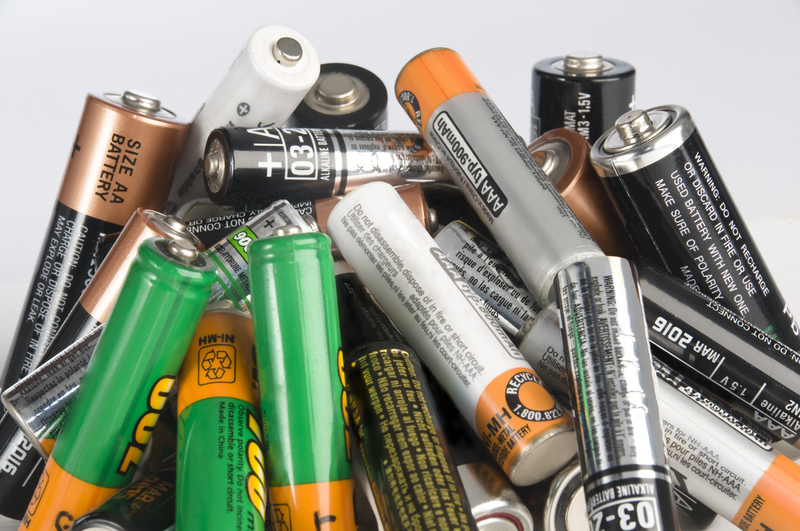Best Ways to Ensure Your PPE Waste Doesn't Harm the Earth
As the world adapts to pandemics and increased health and safety consciousness, the use of Personal Protective Equipment (PPE) has soared. While PPE protects human health, the improper disposal of PPE waste can severely impact our planet. If you are looking for the best ways to manage your PPE waste responsibly and reduce your ecological footprint, you are in the right place. This comprehensive guide explores effective strategies to ensure your PPE waste doesn't harm the earth.
Why Proper PPE Waste Management Is Critical
The global surge in PPE usage--from masks and gloves to face shields and gowns--has had unintended environmental consequences. Items designed for single-use convenience are now a significant pollutant, found in oceans, rivers, and urban spaces. Understanding secure and sustainable PPE waste disposal is essential not just for our health, but for the well-being of our planet.
- PPE waste can take hundreds of years to decompose in landfills.
- Improperly discarded PPE poses threats to wildlife that ingest or become entangled.
- Burning or incinerating PPE releases harmful toxins into the atmosphere.

Types of PPE and Their Environmental Impact
Personal Protective Equipment covers a range of products. Understanding what you use is the first step to responsible disposal.
- Masks (surgical, N95, cloth)
- Gloves (latex, nitrile, vinyl)
- Face shields
- Gowns and protective clothing
- Shoe covers, caps, and other accessories
Environmental Concerns
Most PPE materials are made from non-biodegradable plastics like polypropylene, polyvinyl chloride (PVC), and nitrile. When improperly disposed, these materials can:
- Break down into microplastics, polluting waterways and entering food chains.
- Release toxins during slow decomposition or when burned.
- Contribute to overflowing landfill sites, creating broader waste management issues.
Best Practices to Dispose of PPE Waste Responsibly
Managing PPE waste in an eco-friendly way begins with correct disposal habits. Here are key approaches to ensure your PPE waste doesn't harm the planet:
1. Segregate PPE Waste from Regular Trash
One of the most effective claims towards protecting the environment is waste segregation. PPE contaminated with biological material should NEVER be mixed with household recyclables or compost.
- Have a designated bin for PPE waste at home and workplaces.
- Clearly label bins as "PPE Only" to prevent confusion.
- Do not flush PPE down the toilet--it can clog sewage systems and pollute waterways.
2. Follow Local Guidelines for PPE Disposal
Different regions have specific regulations for safe PPE waste management. Consult your municipal or regional waste authority for up-to-date instructions.
- Some areas require PPE waste to be double-bagged and tied securely before disposal.
- Never recycle disposable PPE unless your local center explicitly accepts it--most don't, given contamination risks and plastic composition.
3. Encourage Use of Reusable PPE Where Feasible
Reducing single-use PPE consumption significantly decreases waste. Consider:
- Opting for reusable cloth masks that can be washed and sanitized.
- Using washable gowns or protective eyewear in appropriate settings.
- Favoring reusable gloves in industrial or household work, provided they can be disinfected safely.
Note: Medical professionals and high-risk areas may still require single-use certified PPE due to infection control protocols.
4. Support PPE Recycling Programs
As the demand to recycle PPE waste grows, innovative solutions are emerging:
- Look for local or national PPE recycling collection points in your area.
- Certain companies accept used PPE for specialized recycling, turning plastics into construction materials or energy.
- Participate in community drives to collect and send PPE waste to dedicated recyclers.
Always research which items are accepted--as of now, most programs handle masks and face shields, while contaminated medical gloves may be excluded.
5. Don't Litter--Model Responsible PPE Use
Littered PPE is a growing blight in streets, parks, and beaches. Proper disposal is everyone's responsibility.
- Carry a small waste bag to store used masks or gloves when a bin isn't available.
- Educate family, friends, and colleagues about the environmental impact of PPE littering.
- Organize or join local clean-up initiatives to remove discarded PPE from the environment.
Innovative Alternatives for Eco-Friendly PPE Waste Management
Technology and ingenuity are driving new approaches to sustainable PPE disposal and design:
Biodegradable PPE
Scientists and manufacturers are developing PPE made from biodegradable materials such as plant fibers, polylactic acid, and cellulose.
- These eco-friendly PPE products break down in composting facilities, reducing long-term waste.
- Look for certifications and test results verifying compostability and biodegradability before purchase.
PPE Upcycling and Repurposing
Creative upcycling transforms PPE waste into useful items. Artisans and companies have repurposed used plastic masks, face shields, and gowns into:
- Construction panels and road materials
- Garden planters and outdoor furniture
- Eco-bricks and insulation
Upcycling not only reduces landfill pressure but also drives awareness about our waste streams.
Improved Sterilization and Reuse Technologies
Emerging sterilization methods allow some types of PPE, especially masks, to be safely decontaminated and reused during supply shortages.
- Ultraviolet (UV) light sterilization
- Hydrogen peroxide vapor treatments
- Advanced washing techniques for certain garments
Always follow guidelines provided by health authorities before reusing PPE designed for single use only.
How to Choose Environmentally Friendly PPE Options
If you want to be proactive, select PPE with a lower environmental impact from the outset. Consider the following criteria:
- Source PPE made from recyclable or biodegradable materials, especially for non-medical settings.
- Choose products from companies that demonstrate sustainable manufacturing practices and packaging.
- Opt for reusable over disposable PPE whenever your environment and risk level allow.
- Support innovation--back brands investing in eco-conscious PPE development.
Remember, every small choice adds up. Shifting just a fraction of PPE purchases to greener alternatives makes a measurable difference.
Educating and Advocating for Sustainable PPE Waste Solutions
Sustainability in PPE waste isn't just a matter of personal responsibility--it depends on teamwork and collective advocacy. Here's how you can help:
- Raise awareness of the risks of negligent PPE disposal in your networks.
- Share resources and tips on how to correctly handle PPE waste.
- Work with your workplace, school, or organization to implement sustainable PPE waste policies.
- Encourage policymakers to invest in research, recycling, and incentives for eco-friendly PPE.
Best Practices for Businesses and Institutions
If you manage a facility or workplace, you play a crucial role in reducing PPE waste:
- Install labeled PPE waste bins throughout your premises.
- Contract with specialized waste handlers for safe disposal and recycling, where available.
- Offer training on eco-conscious PPE use and disposal.
- Review supply contracts for opportunities to shift to sustainable PPE suppliers.
Key Takeaways: A Greener Approach to PPE Waste
- Always dispose of PPE in designated bins, not recycling or compost.
- Double-bag contaminated items to protect public health and sanitation workers.
- Seek out and support PPE recycling initiatives in your area.
- Switch to reusable or biodegradable PPE when feasible.
- Spread the word and educate others on protecting the earth from PPE pollution.
Remember, every responsible action you take helps prevent PPE waste from harming wildlife, waterways, and communities worldwide.

Frequently Asked Questions (FAQ) About PPE Waste and the Environment
Can Disposable Masks Be Recycled?
Most single-use masks are made from plastic fibers and cannot be recycled through standard household programs due to contamination and material limitations. Look for specialty mask recycling bins or collection schemes if available.
Is Burning PPE Waste Safe?
Incineration can release toxins unless conducted in specialized facilities. Do not burn PPE waste at home or in uncontrolled environments.
What's the Safest Way to Dispose of Used PPE?
Place used PPE in a plastic bag, tie it securely, and put it in a designated PPE waste bin or landfill-designated waste. Never litter or flush PPE items.
Are There Biodegradable or Compostable PPE Options?
Yes, more brands are offering biodegradable gloves and masks, but always ensure certified compostability and dispose of them in industrial composting facilities--not in regular compost heaps.
Conclusion: Be a Steward of the Earth with Responsible PPE Waste Practices
Ensuring your PPE waste doesn't harm the earth is an attainable goal that hinges on small, conscious choices and a willingness to adapt. By segregating waste, supporting innovative recycling, choosing sustainable products, and sharing knowledge, you help build a cleaner, greener future. Next time you remove a mask or gloves, remember: your actions matter. Together, we can protect both people and the planet from the unintended consequences of essential PPE.
Take the first step today--review your PPE waste habits, and encourage your community to join the movement for eco-friendly PPE disposal.
